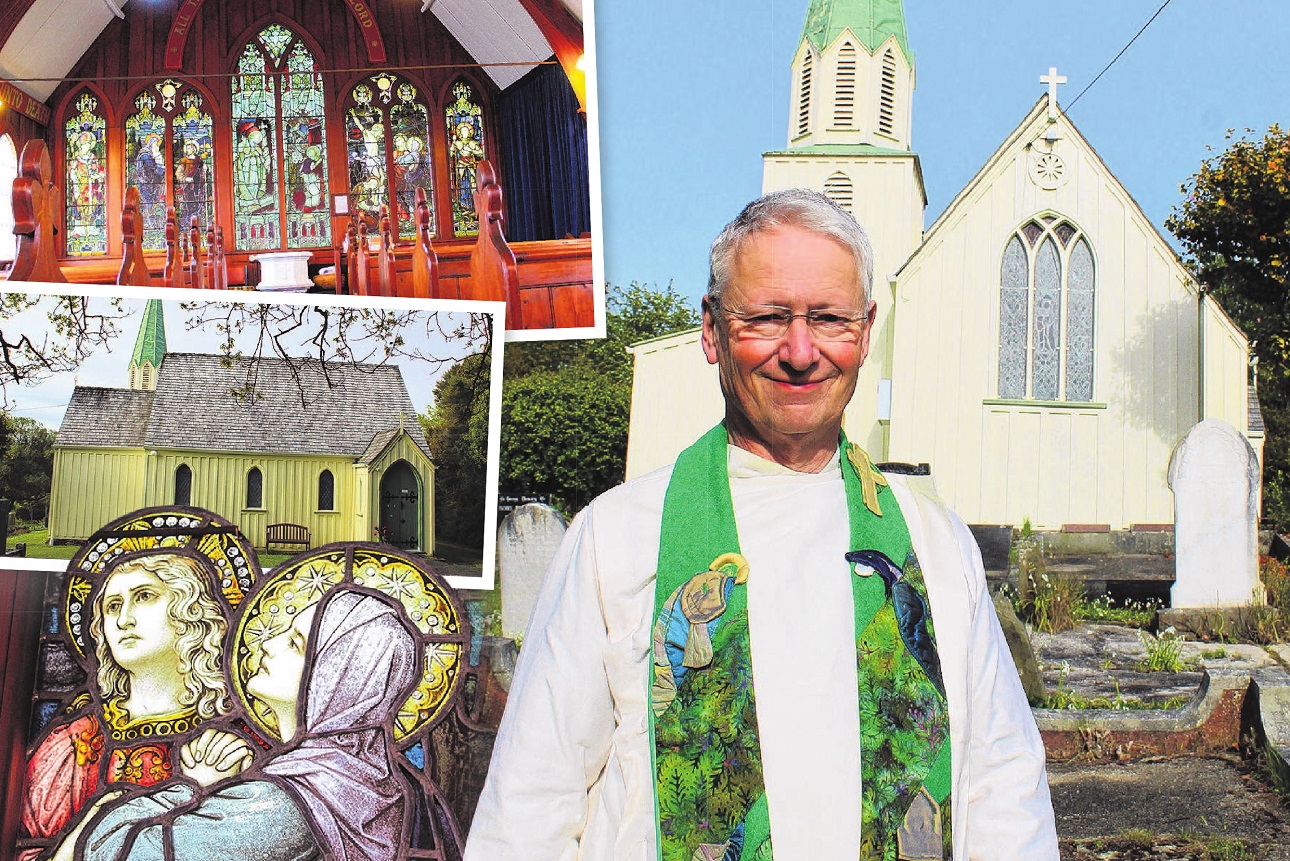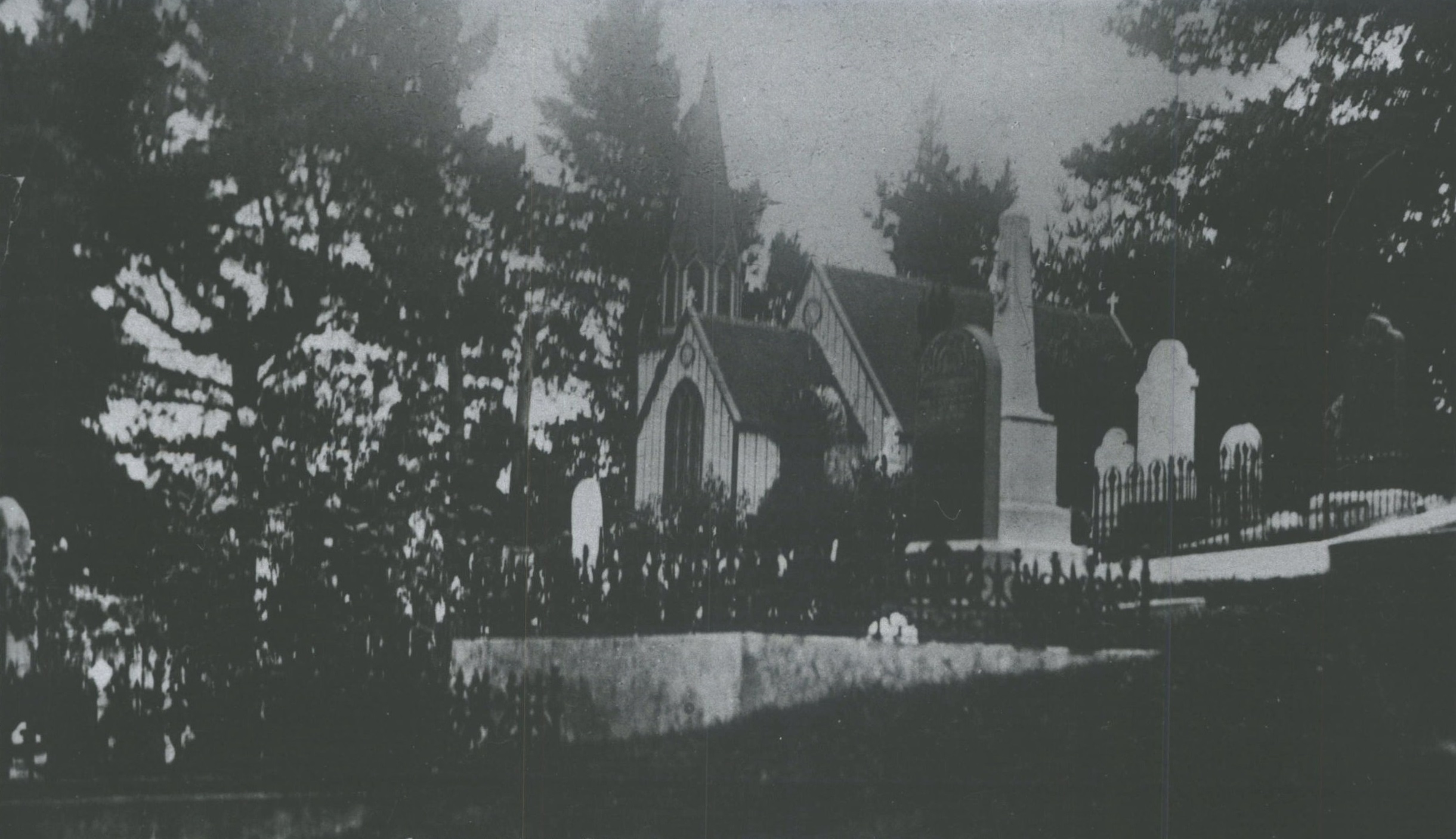
As the congregation prepares to celebrate its 150th anniversary, reporter Simon Henderson visits the tiny coastal church to uncover a tale of light born of war.
Who would have thought a peaceful wooden church tucked away in the hills of Warrington would have much to do with post-war hatred of Germany?
St Barnabas Anglican church will soon be celebrating 150 years since the first service was held on November 11, 1872, and priest in charge Rev Dr Jeremy Nicoll said he enjoyed taking services for the congregation.
Conducting services inside St Barnabas was particularly pleasant because when he was facing the congregation he could enjoy the impressive stained glass windows at the back of the church.
"The windows at the back have a few legends associated with them," he said.
The windows were originally ordered for St Augustine's church in Brisbane, Australia, which opened in 1920.
"They were built as a war memorial, so you can see Joan of Arc and all that went with that theme," Rev Dr Nicoll said.
However, when the windows arrived in Australia from Germany, dock workers refused to unload them because of their Bavarian origin.

So the Bavarian stained-glass windows ended up being stored at the Fraser Art Glass Works in Dunedin.
There they remained until 1935, when Bishop Nevill purchased them to be installed at St Barnabas.
The Otago Daily Times in 1934 said the decision to refuse the windows represented "a stubborn persistence of exaggerated nationalism and racial antipathy".
But St Augustine's loss is arguably St Barnabas’ gain, and the beautiful windows will be able to be seen by all when the church celebrates its 150th anniversary.
Building of the church began with Captain William Pitt and his wife Annie Pitt (nee Gellibrand).
Church services had previously been held at the home of the Pitts, and the land for the church and graveyard was donated by Mrs Pitt.
Reporting on the laying of the foundation stone of the church in 1972, the Evening Star outlined how construction of the basement of the church was undertaken by stonemason Mr Semple, of Blueskin Bay.

Researching the history of her great great-grandfather Benjamin Smith was Lynn Hunter, of Fairfield.
She had visited the church and said she was extremely proud of her ancestor.
"I think Benjamin Smith was a clever man to have built such a beautiful little wooden Anglican church, an asset and a fine heritage example of our previous ancestors who came to this land to start a fresh life in New Zealand," she said.
— A 150th anniversary celebration will take place at St Barnabas on Sunday November 13, followed by a light lunch at nearby Warrington Hall
Email stbarnabas.ch@gmail.com for details.
FIRM FOUNDATIONS
Somewhere in the foundations of St Barnabas Church in Warrington lies buried treasure, of a sort.
In April 1872 the Evening Star reported during the laying of the foundation stone of the church a bottle containing "coins of the realm now current" as well as copies of the Otago Daily Times and the Evening Star from Friday April 12, 1872 were deposited in a cavity under the foundations.











